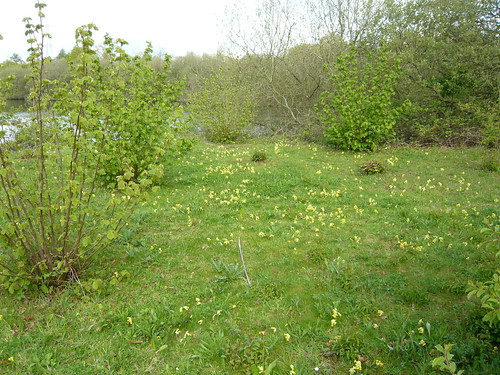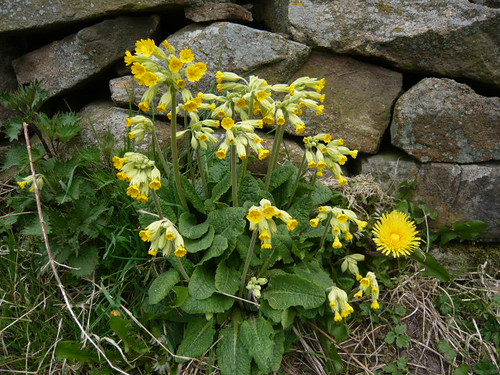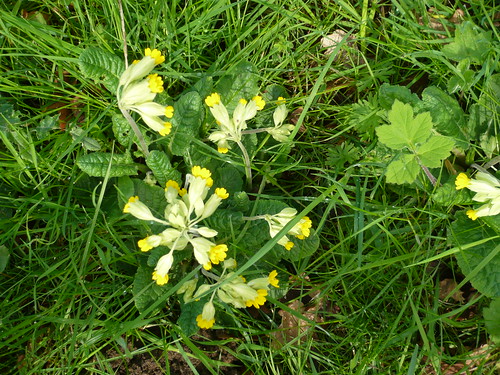Wild Cowslip aka Primula veris
Primula veris is more commonly known as the Cowslip but also resides under the alternative names of Palsieworts, Paigles, Cowslop or Petty Mulleins.
The range of local names hints at the uses and affection for this cheerful plant.
Cowslips are still used in herbal remedies for nervous complaints and paralysis. Perhaps that is where the old name, Palsieworts comes from. Cowslop is not as fragrant.
Traditional Cowslip wine probably needs too many flowering heads to sustain the wild population of plants.
Other names that relate to their similarity to a bunch of keys include ‘key flower’ and ‘key of heaven’ whilst ‘fairy cups’ and ‘tittypines’ are a bit more avaunt-guard.
Locations for Growing Cowslips.

I liked this field of wild flowers that included a large number of Cowslips. Obviously from the common name of primula veris you would expect them to be at home in a meadow.
Caught in a corner of a field the shelter provided by the wall shows off the top Cowslip to advantage.
When grown in clumps in a border or raised bed they combine well with other spring and early summer flowering plants.
I like them for the freshness in a small rock garden.
With the loss to agriculture of much meadow land it is now also worth seeking out the wild flowers on cliff tops and undisturbed land at the seaside.
Propagating Cowslips
Grow from seed sown in autumn. Spring planted seed needs to be stratified in some cold to help germination.
Clumps can be divided after flowering.
Plants sown in a seed bed should be moved to there final position in autumn.
Grow some cowslips for the butterflies and caterpillars to feed on.

